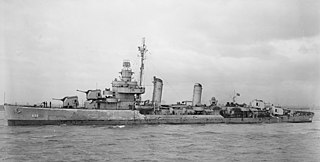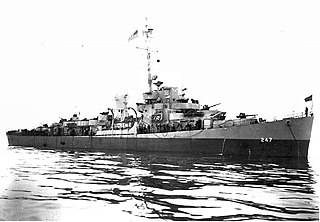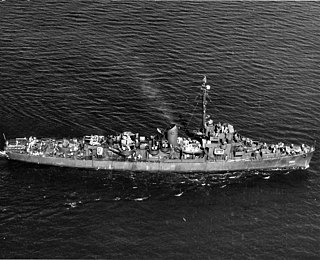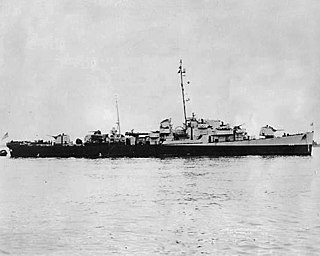
USS Jacob Jones (DD-130), named for Commodore Jacob Jones USN (1768–1850), was a Wickes-class destroyer. Jacob Jones was laid down by the New York Shipbuilding Corporation at Camden, New Jersey on 21 February 1918, launched on 20 November 1918 by Mrs. Cazenove Doughton, great-granddaughter of Commodore Jones and commissioned on 20 October 1919, Lieutenant Commander Paul H. Bastedo in command. She was sunk by a German submarine in 1942 during World War II.

USS Ericsson (DD-440), a Gleaves-class destroyer, was the third ship of the United States Navy to be named after John Ericsson, who is best known for devising and building the Civil War ironclad USS Monitor.

USS Rodman (DD-456/DMS-21), a Gleaves-class destroyer, is the first ship of the United States Navy to be named for Admiral Hugh Rodman.

USS Tillman (DD-641), a Gleaves-class destroyer, was the second ship of the United States Navy to be named for United States Senator Ben Tillman. In commission from 1942 to 1947, she saw service in World War II, primarily in the Atlantic and Mediterranean.

USS Knight (DD-633), a Gleaves-class destroyer, is the only ship of the United States Navy to be named for Admiral Austin M. Knight.

USS Doran (DD-634), a Gleaves-class destroyer, was the second ship of the United States Navy to be named for Medal of Honor recipient John James Doran.

USS James C. Owens (DD-776), an Allen M. Sumner-class destroyer, is the only ship of the United States Navy FRAM II class to be named for Lieutenant James C. Owens Jr., a member of Torpedo Squadron 8 on board USS Hornet. His entire squadron was lost in an attack against Japanese aircraft carriers 4 June during the Battle of Midway. Lt. Owens received the Navy Cross and the Presidential Unit Citation (US) posthumously.

The third USS Trippe (DD-403) was a Benham-class destroyer in the United States Navy. She was named for John Trippe.

USS Cowie (DD-632), a Gleaves-class destroyer, is the only ship of the United States Navy to be named for Rear Admiral Thomas Jefferson Cowie.

USS Jeffers (DD-621/DMS-27), a Gleaves-class destroyer, was the only ship of the United States Navy to be named for Commodore William N. Jeffers.

USS Davison (DD-618/DMS-37), a Gleaves-class destroyer, was named for Lieutenant Commander Gregory C. Davison (1871–1935). Davison specialized in torpedo boat operations.

USS Fitch (DD-462/DMS-25), was a Gleaves-class destroyer of the United States Navy.

USS Laub (DD-613) was a Benson-class destroyer in the United States Navy during World War II. She was the second ship named for Henry Laub, who was killed during the Battle of Lake Erie in 1813.

USS McLanahan (DD-615) was a Benson-class destroyer in the United States Navy during World War II. She was the second Navy ship named for Tenant McLanahan.

USS Nields (DD-616) was a Benson-class destroyer in the United States Navy during World War II.

USS Jacob Jones (DE-130) was an Edsall-class destroyer escort built for the U.S. Navy during World War II. She served in the Atlantic Ocean and provided destroyer escort service against submarine and air attack for Navy vessels and convoys.

USS Stanton (DE-247) was an Edsall-class destroyer escort built for the U.S. Navy during World War II. She served in the Atlantic Ocean the Pacific Ocean and provided destroyer escort protection against submarine and air attack for Navy vessels and convoys.

USS Rhodes (DE-384) was an Edsall-class destroyer escort in service with the United States Navy from 1944 to 1946 and from 1955 to 1963. She was scrapped in 1975.

USS Traw (DE-350) was a John C. Butler-class destroyer escort in service with the United States Navy from 1944 to 1946. She was sunk as a target in 1968.

USS Maurice J. Manuel (DE-351) was a John C. Butler-class destroyer escort acquired by the U.S. Navy during World War II. The primary purpose of the destroyer escort was to escort and protect ships in convoy, in addition to other tasks as assigned, such as patrol or radar picket.




















